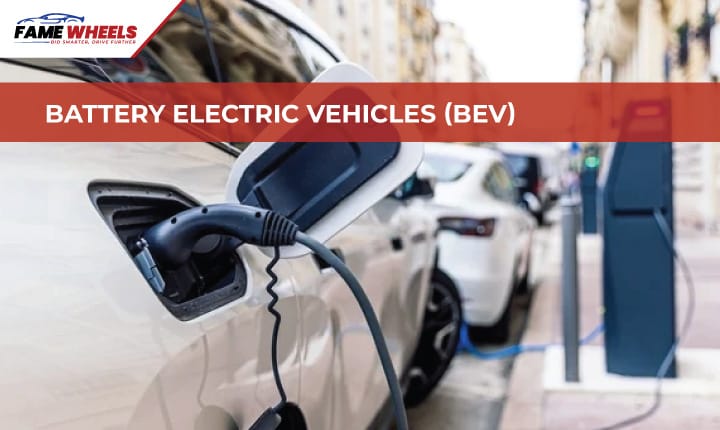Electric cars are also known as battery-electric vehicles (BEVs). These cars use one or more electric motors instead of standard internal combustion engines. Some of their most known advantages are a (Go-Green) cleaner environment since they do not use fossil fuels.
The question is whether they have a low carbon emission impact. BEVs have a higher performance power since they have a higher fraction of energy used to propel the vehicle.
Electric vehicles have a lower maintenance cost since they have few movable parts, reducing the number of elements that may need replacing or maintenance, but their initial price is high. They lack congestion in the filling stations as they can be easily charged at home, and fewer people are in the charging stations, but the battery cannot work for a long time. Even though electric cars have certain advantages, they are causing more harm than good, which is not expected, making it the reason they will not save us. The disadvantages of electric cars, including battery problems, low affordability, and no ecological materials required for production, are more significant than their advantages.
Materials Used for Production
First, producing electric cars requires using rare earth materials that need to be extracted and processed, such as copper, cobalt, and lithium carbonate. The excavation of these minerals and the whole manufacturing process requires using fuel machinery, thus contributing to carbon emissions. The excess energy used to manufacture and process them is released into the atmosphere, which adds to a more significant carbon footprint worldwide. The excavation of these materials is also harmful to the environment. It results from open ditches left where excavation occurs and sometimes may fill with water, which may cause water-borne diseases or even drowning. Batteries used in electric materials also require many materials. Even though electric vehicles do not use fossil fuels to run, they need them to be produced, leaving a mark on environmental pollution print. This information shows that the materials used for the production of the electric cars is not sustainable, and it harms the ecology.
Battery Problems
Another challenge electric vehicles face is the charging time, charging stations, and control of people in the stations. In other words, they have conventional battery problems, which are the significant drawbacks of this technology.
The problems encountered are grid overloading and load forecasting, the time required, and traffic-crowd management at the allocated stations.
Electric cars can be charged at home, but there is the fact that they take too long to be charged. An electric car may take close to twelve hours to be fully charged, unlike fossil fuel vehicles that can be fueled in less than five minutes.
In an emergency, the vehicle not responding is a substantial disadvantage, making it a controversial choice.
Another issue is the location of the battery charging stations. Many of these points need to be more effective as they are inaccessible to everyone and located far apart, making them unreliable in remote areas or when traveling to a new geographical area.
It may also cause problems when they run out of battery in an unfamiliar location. Fuel cars have an advantage where one can access the nearest filling station, carry the fuel in a container and transfer it to their vehicle if it stops running due to fuel shortage.
Electric vehicles are not the case as the batteries require to be charged, and the charging stations are at designated places, thus causing the driver to be stranded wherever they are.
Electric cars also have a shorter mileage compared to fossil fuel vehicles. Recent studies have revealed that electric cars can operate within 4–8 miles per kWh of energy and thus can only travel short distances since the speed is also limited.
These cars may not be suitable for emergency vehicles such as ambulances and firefighting trucks. Their operation requires speed and efficiency, which may not be applicable if they use electric cars. The short mileage also makes them unsuitable for long-distance trucks used for transportation as they require many stopovers to recharge, yet the charging stations can be hard to find.
In other words, there are many problems with the battery in electric vehicles, which makes them problematic to use.
Low Affordability
Finally, there is the issue of electric vehicles being unaffordable as their initial cost is high. The initial cost of producing electric vehicles is very high since the materials needed are expensive, and so is the extraction process.
It makes it hard for an average-earning person to purchase the vehicle. The batteries used in these vehicles also make them expensive, especially when they need replacement. Due to the rarity of these vehicles, many of their spare parts and systems are hard to find, and when one does find them, the purchasing cost is very high. It also leads to the problem of finding a well-skilled and equipped mechanic that can be able to replace them without damaging the other parts. Replacing them causes problems for the environment as they are not degradable. It means manufacturers must create space to dispose of dead and broken batteries. The battery costs will take longer to decrease, and affordability will remain a challenge in the immediate future, meaning that not everyone will be able to afford them, even with subsidies from the government.
Suppose one country controls the production of these vehicles. In that case, they might interfere with the pricing, as they may set them at a high rate to increase the revenue produced by them, leading to their overall unaffordability.
Conclusion
The question is whether the following material used for production will be environmentally friendly. Also, there is a need for public discussions on the manufacturing process of these vehicles so everyone is educated on the carbon impact these vehicles have.









